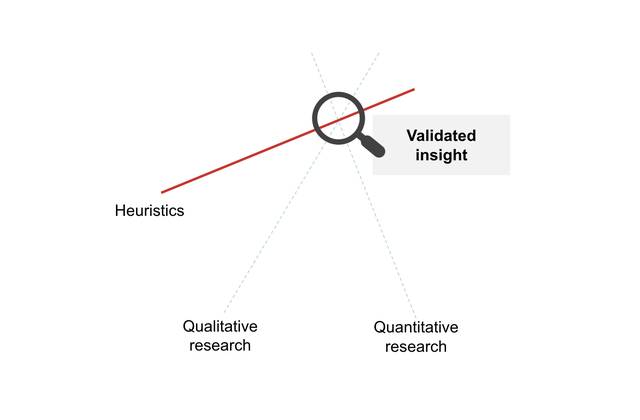
Data triangulation is the practice of combining multiple data sources, methods, or viewpoints to form a more complete and accurate understanding of a user experience or problem. Instead of relying solely on numbers, user feedback, or expert evaluation, triangulation helps us blend them all - validating signals and uncovering nuance.
At its core, triangulation is about building confidence and making better decisions based on layered insight.

At Conversionista, data triangulation isn’t just a method - it’s a fundamental part of how we work. Whether we’re improving conversion flows, diagnosing drop-offs, or crafting seamless customer journeys, we rely on a triangulated approach to surface the strongest insights and opportunities.
Here are the types of activities we commonly use to gather input for triangulation:
This cross-functional approach ensures that no perspective is left out - and that our decisions are grounded in evidence from multiple angles.
Data triangulation isn’t a buzzword. It’s a mindset of curiosity, openness, and collaboration. It pushes us to move beyond surface-level interpretations and build experiences that truly reflect user needs - backed by data, user voices, and design.
So next time your team spots a signal, ask:
When those dots connect, you’re not just making guesses.
You’re building meaningful, strategic experiences - rooted in evidence.
Need a hand? We’re here to help:
Ready to accelerate your digital growth? Add your details here or email us at hej[a]conversionista.se and we’ll get back to you.
